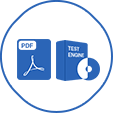Positive risk ranking is a basis for prioritization that allows the project team to work initially with lower-risk requirements first. Positive risk ranking is a technique that assigns a score to each requirement based on the level of risk associated with it, where a higher score indicates a lower risk and a lower score indicates a higher risk. The requirements are then prioritized in descending order of their scores, so that the project team can focus on the requirements that have the least uncertainty, complexity, or volatility first, and defer the requirements that have the most uncertainty, complexity, or volatility later. Positive risk ranking helps to reduce the likelihood and impact of potential problems, issues, or changes that may affect the requirements or the solution12
Option A is incorrect because quantitative ranking is not a basis for prioritization that allows the project team to work initially with lower-risk requirements first, but a technique that uses numerical values to compare and rank the requirements based on multiple criteria, such as value, cost, risk, urgency, dependency, etc. Quantitative ranking does not necessarily prioritize the lower-risk requirements first, but the requirements that have the highest overall score based on the weighted criteria34
Option C is incorrect because relationship to other requirements is not a basis for prioritization that allows the project team to work initially with lower-risk requirements first, but a factor that considers the dependencies and interdependencies among the requirements, such as prerequisite, co-requisite, or conflicting requirements. Relationship to other requirements does not necessarily prioritize the lower-risk requirements first, but the requirements that have the most influence or impact on the other requirements.
Option D is incorrect because implementation difficulty is not a basis for prioritization that allows the project team to work initially with lower-risk requirements first, but a factor that considers the effort, time, resources, and skills required to implement the requirements. Implementation difficulty does not necessarily prioritize the lower-risk requirements first, but the requirements that have the least difficulty or complexity to implement.
References:
Business Analysis Techniques - ECBA, CCBA, CBAP Endorsed, Section 8.5: Prioritization, p. 101-102.
Certification of Capability in Business Analysis (CCBA®) - Simplilearn, Module 7: Requirements Analysis and Design Definition, Lesson 7.5: Define Transition Requirements, p. 6-7.
Business Analysis Techniques - ECBA, CCBA, CBAP Endorsed, Section 8.5: Prioritization, p. 102-103.
Certification of Capability in Business Analysis (CCBA®) - Simplilearn, Module 7: Requirements Analysis and Design Definition, Lesson 7.5: Define Transition Requirements, p. 8-9.
[Business Analysis Techniques - ECBA, CCBA, CBAP Endorsed], Section 8.5: Prioritization, p. 100-101.
[Certification of Capability in Business Analysis (CCBA®) - Simplilearn], Module 7: Requirements Analysis and Design Definition, Lesson 7.5: Define Transition Requirements, p. 10-11.
[Business Analysis Techniques - ECBA, CCBA, CBAP Endorsed], Section 8.5: Prioritization, p. 100.
[Certification of Capability in Business Analysis (CCBA®) - Simplilearn], Module 7: Requirements Analysis and Design Definition, Lesson 7.5: Define Transition Requirements, p. 12-13.








